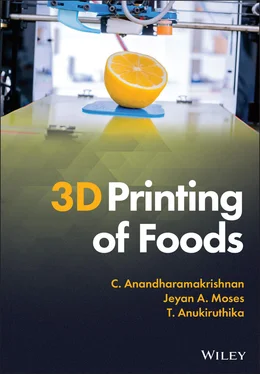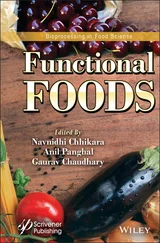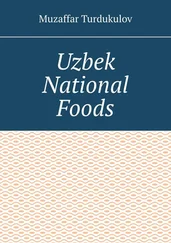C. Anandharamakrishnan - 3D Printing of Foods
Здесь есть возможность читать онлайн «C. Anandharamakrishnan - 3D Printing of Foods» — ознакомительный отрывок электронной книги совершенно бесплатно, а после прочтения отрывка купить полную версию. В некоторых случаях можно слушать аудио, скачать через торрент в формате fb2 и присутствует краткое содержание. Жанр: unrecognised, на английском языке. Описание произведения, (предисловие) а так же отзывы посетителей доступны на портале библиотеки ЛибКат.
- Название:3D Printing of Foods
- Автор:
- Жанр:
- Год:неизвестен
- ISBN:нет данных
- Рейтинг книги:3 / 5. Голосов: 1
-
Избранное:Добавить в избранное
- Отзывы:
-
Ваша оценка:
- 60
- 1
- 2
- 3
- 4
- 5
3D Printing of Foods: краткое содержание, описание и аннотация
Предлагаем к чтению аннотацию, описание, краткое содержание или предисловие (зависит от того, что написал сам автор книги «3D Printing of Foods»). Если вы не нашли необходимую информацию о книге — напишите в комментариях, мы постараемся отыскать её.
Explore the fascinating realm of 3D food printing and its applications 3D Printing of Foods
3D Printing of Foods
3D Printing of Foods
3D Printing of Foods — читать онлайн ознакомительный отрывок
Ниже представлен текст книги, разбитый по страницам. Система сохранения места последней прочитанной страницы, позволяет с удобством читать онлайн бесплатно книгу «3D Printing of Foods», без необходимости каждый раз заново искать на чём Вы остановились. Поставьте закладку, и сможете в любой момент перейти на страницу, на которой закончили чтение.
Интервал:
Закладка:
Table of Contents
1 Cover
2 Title Page 3D Printing of Foods C. Anandharamakrishnan National Institute of Food Technology, Entrepreneurship and Management ‐ Thanjavur (an Institute of National Importance; formerly Indian Institute of Food Processing Technology ‐ IIFPT), Ministry of Food Processing Industries, Government of India, Thanjavur, Tamil Nadu, India. Jeyan A. Moses National Institute of Food Technology, Entrepreneurship and Management ‐ Thanjavur (an Institute of National Importance; formerly Indian Institute of Food Processing Technology ‐ IIFPT), Ministry of Food Processing Industries, Government of India, Thanjavur, Tamil Nadu, India. T. Anukiruthika National Institute of Food Technology, Entrepreneurship and Management ‐ Thanjavur (an Institute of National Importance; formerly Indian Institute of Food Processing Technology ‐ IIFPT), Ministry of Food Processing Industries, Government of India, Thanjavur, Tamil Nadu, India.
3 Copyright Page
4 Preface
5 1 Introduction to 3D Printing Technology 1.1 Introduction 1.2 Digital Manufacturing: From Rapid Prototyping to Rapid Manufacturing 1.3 Milestones in 3D Printing Technology 1.4 Different Historical Eras in 3D Printing 1.5 Prospects of 3D Food Printing 1.6 Design Considerations of 3D Printer 1.7 Software Requirements and Hardware Integration 1.8 Designing, Digital Imaging, and Modelling 1.9 Food Printing Platforms 1.10 Comparison Between Food 3D Printing and Robotic Food Manufacturing 1.11 Conclusion References
6 2 3D Printing Approaches 2.1 Introduction 2.2 Additive Manufacturing 2.3 3D Food Printing Technologies 2.4 Extrusion‐Based Printing 2.5 Selective Sintering 2.6 Inkjet Printing 2.7 Binder Jetting 2.8 Bio‐Printing 2.9 Future Prospects and Challenges 2.10 Conclusion References
7 3 Food Components and Their Role in Printability 3.1 Recipes in ‘Print and Eat Technology’ 3.2 Role of Food Constituents 3.3 Panorama of Food Printing 3.4 Insights on the Printability of Different Food Constituents 3.5 Classification of Foods Based on Their Printability 3.6 Conclusion References
8 4 Factors Affecting the Printability of Foods 4.1 Introduction 4.2 Factors That Affect Extrusion 3D Printing 4.3 Intrinsic Properties 4.4 Extrinsic Properties 4.5 Factors Affecting Other 3D Printing Technologies 4.6 Conclusion References
9 5 Printability and Techniques 5.1 Introduction 5.2 Printability and Material Characteristics 5.3 Material Characterization Techniques 5.4 Assessment of Printability 5.5 Printability Evaluation of 3D Printed Constructs 5.6 Conclusion References
10 6 Natively Printable Foods 6.1 Introduction 6.2 Natively Printable Materials as Basic Food 3D Printing Formulations 6.3 Printability: Concepts and Underlying Mechanisms 6.4 Types of Natively Printable Materials 6.5 Insights and Scope for Commercialization 6.6 Concluding Remarks References
11 7 Pre‐Processing of Non‐Printable Foods 7.1 Introduction 7.2 Natively Non‐Printable Materials 7.3 Pre‐Processing and Formulations for 3D Printing 7.4 Post‐Printing Stability of the Printed 3D Constructs 7.5 Scope of Non‐Printable Materials for 3D Printing Applications 7.6 Conclusion References
12 8 Alternative Ingredients Used in Food Printing 8.1 Introduction 8.2 Alternative Food Sources and the Sustainability Perspective 8.3 Rationale of Alternative Material Supplies 8.4 Innovative Food Sources 8.5 3D Printing of Alternative Ingredients 8.6 Future Trends and Perspectives 8.7 Challenges and Limitations 8.8 Conclusion References
13 9 Post‐Processing of 3D Printed Foods 9.1 Introduction 9.2 Material Supply Requirements for Food 3D Printing 9.3 Post‐Processing Methods 9.4 Novel Post‐Processing Methods 9.5 Assessment of Post‐Processing Characteristics 9.6 Sensorial Characterization 9.7 Requisites, Challenges, and Future Trends 9.8 Conclusion References
14 10 4D Printing Technology 10.1 Introduction 10.2 4D Printing: Concept and Functionality 10.3 Smart Materials for 4D Printing 10.4 Mechanism of Shape Memory Polymers 10.5 Shape Memory Effect in 4D Printing 10.6 Stimuli‐Responsive Systems 10.7 Programming Strategies 10.8 Spontaneous Transformation in Foods 10.9 Recent Advancements in 4D Food Printing 10.10 Future Trends and Challenges 10.11 Conclusion References
15 11 Applications of Food 3D Printing Technology 11.1 Introduction 11.2 Applications of 3D Food Printing 11.3 Future Outlook of 3D Food Printing 11.4 Conclusion References
16 12 Integrating Encapsulation Technique with 3D Food Printing 12.1 Introduction 12.2 Integration of 3D Printing and Encapsulation 12.3 Structure Modified Delivery Systems 12.4 Techniques and Methods for Micro and Nanoencapsulation 12.5 Future Outlook and Prospects of Synergistic Approaches 12.6 Barriers and Research Constraints 12.7 Conclusion References
17 13 Integrating Electrohydrodynamic Processes with Food 3D Printing 13.1 Introduction 13.2 Encapsulation Techniques Involving Electrohydrodynamic Process 13.3 Applications in the Food Industry 13.4 Integrating 3D Printing with Electrospraying/ Electrospinning 13.5 Future Perspectives and Challenges 13.6 Conclusion References
18 14 Globalization of Printed Foods and Consumer Perception to 3D Printed Foods 14.1 Introduction 14.2 Circular Economy in Food Printing 14.3 Globalization of Food 3D Printing Technology 14.4 New Horizons of 3D Food Printing 14.5 3D Food Printing – A Classic Disruptive Technology 14.6 Technological Barriers and Challenges 14.7 Conclusion References
19 15 Food Industry Market Trends and Consumer Preferences 15.1 Introduction 15.2 Food Service Market: Consumption to Prosumption 15.3 Food Decisions and Consumer Attitude 15.4 Approaches and Methods to Assess Consumer Perception 15.5 Consumer's Acceptance of Novel Foods 15.6 Intervention Tools for Enhancing Consumer Knowledge 15.7 Trends, Advancements, and Future Directions 15.8 Conclusion References
20 16 Safety, Challenges, and Research Needs 16.1 Introduction 16.2 Implications of Food Printing 16.3 Applicability and Storability 16.4 Food Safety Considerations 16.5 Legal Framework and Regulations 16.6 Challenges and Research Needs 16.7 Conclusion References
21 Index
22 End User License Agreement
List of Tables
1 Chapter 1 Table 1.1 Common slicing software used in 3D printing. Table 1.2 List of online sources for downloading 3D models. Table 1.3 Different scanning technologies. Table 1.4 Software used for repairing STL file after 3D scanning.
2 Chapter 3 Table 3.1 Classification of food hydrocolloids.
3 Chapter 6Table 6.1 Summary of the mechanism of printability of natively printable mat...
4 Chapter 7Table 7.1 Summary of the role of commercially important hydrocolloids in foo...Table 7.2 Printability of the traditional food materials.
5 Chapter 8Table 8.1 Recent trends on the market growth rate of alternative proteins.
List of Illustrations
1 Chapter 1 Figure 1.1 Schematic representation of subtractive and additive manufacturin... Figure 1.2 Workflow of 3D printing process. Figure 1.3 Prospects of 3D food printing. Figure 1.4 Value chain of 3D food printing. (a) consumer buying 3D printed f... Figure 1.5 Illustration of printing movements in various printer configurati... Figure 1.6 Operation of delta type 3D printer. (a) Illustration of printing ... Figure 1.7 Stepper motor and its controlling mechanism. Figure 1.8 Common STL errors.
2 Chapter 2 Figure 2.1 Classification of AM technologies. Figure 2.2 Schematic view of CARK food 3D printer. Figure 2.3 Schematic diagram of typical extrusion‐based 3D printing. Figure 2.4 Different types of extrusion mechanism (a) piston‐based extrusion... Figure 2.5 3D printed samples using dual extrusion of different internal str... Figure 2.6 3D printing of material supply using multi‐head 3D food printer M... Figure 2.7 Hot‐melt extrusion of complex 3D geometry bunny using chocolate.... Figure 2.8 3D printed wheat starch hydrogels. Figure 2.9 Schematic diagram of selective laser printing. Figure 2.10 3D printed sugar constructs using sintering process (a) 2D patte... Figure 2.11 Schematic diagram of inkjet printing. Figure 2.12 Schematic diagram of binder jetting. Figure 2.13 Steps involved in 3D bioprinting process. Figure 2.14 Schematic representation of integration of 3D printing with plan... Figure 2.15 Schematic diagram of 3D bioprinting.
Читать дальшеИнтервал:
Закладка:
Похожие книги на «3D Printing of Foods»
Представляем Вашему вниманию похожие книги на «3D Printing of Foods» списком для выбора. Мы отобрали схожую по названию и смыслу литературу в надежде предоставить читателям больше вариантов отыскать новые, интересные, ещё непрочитанные произведения.
Обсуждение, отзывы о книге «3D Printing of Foods» и просто собственные мнения читателей. Оставьте ваши комментарии, напишите, что Вы думаете о произведении, его смысле или главных героях. Укажите что конкретно понравилось, а что нет, и почему Вы так считаете.










